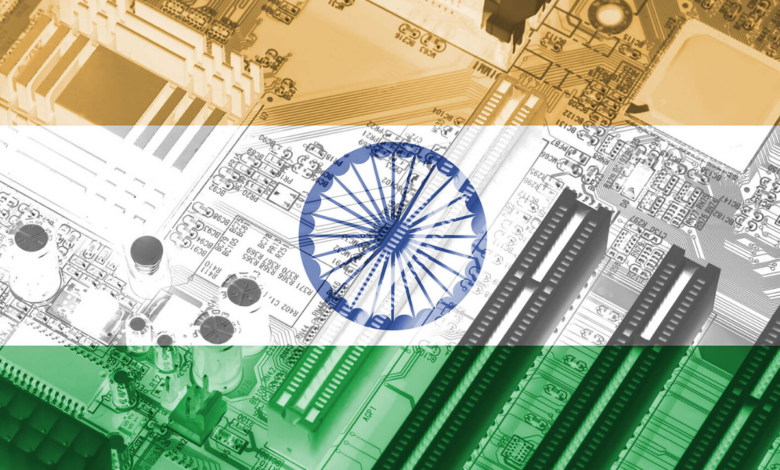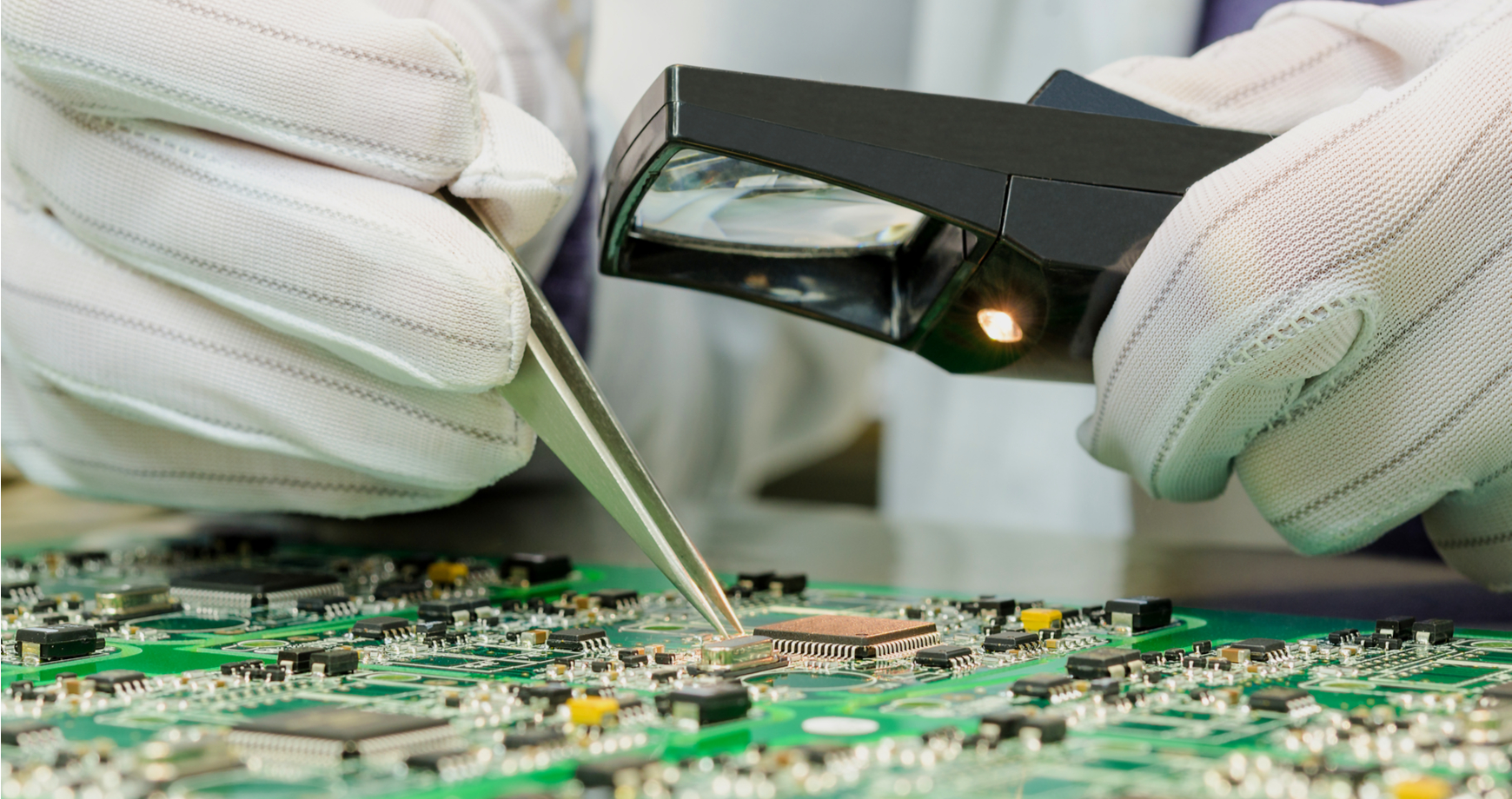India’s Electronics Production To Hit Rs 8.42 Lakh Crore in FY23: Govt.
This represents a massive increase over the FY 2021–22 budget of Rs. 6.40 lakh crore (US$87.35 billion). The minister added that India's percentage of global exports has risen from 1.2% to around 1.8% this year from 1.1% last year. This growth in electronics production is a result of the Indian government's push for local manufacturing under the Make in India initiative.

India’s Electronics Production To Hit Rs 8.42 Lakh Crore in FY23: Govt.
In recent years, India’s electronics sector has expanded staggeringly. Domestic electronics manufacturing is anticipated to surpass Rs 8.42 lakh crore (USD 105 billion) in the current fiscal year, according to Ashwini Vaishnaw, minister of electronics and information technology.
This represents a massive increase over the FY 2021–22 budget of Rs. 6.40 lakh crore (US$87.35 billion). The minister added that India’s percentage of global exports has risen from 1.2% to around 1.8% this year from 1.1% last year. This growth in electronics production is a result of the Indian government’s push for local manufacturing under the Make in India initiative.
The government has been providing various incentives to electronics manufacturers, such as production-linked incentives, to encourage local production. The government’s efforts have led to an increase in domestic production of electronic items, which in turn has led to a reduction in the country’s dependence on imports.

India’s electronics production: An overview
India’s electronics production has been on an upward trajectory in recent years. The electronics industry is one of the fastest-growing industries in the country, with a growth rate of 25-30 per cent annually. The electronics industry is a key contributor to the Indian economy, with the potential to generate employment opportunities for millions of people.
The Indian electronics industry is divided into three categories: consumer electronics, industrial electronics, and strategic electronics. Consumer electronics include items such as smartphones, televisions, and home appliances. Industrial electronics include items such as instrumentation, control systems, and automation equipment. Strategic electronics include items such as defence electronics and aerospace electronics.
The minister claims that between FY 2016–17 and FY 2021–22, the value of electronic product exports will have increased by 22.39 per cent, from Rs 39,978 crore (USD 5.96 billion) to Rs 1,09,797 crore (USD 14.6 billion).
According to Vaishnaw, in the current fiscal year (2022-23), India’s electronic exports are projected to rise from Rs 1.09 lakh crore (USD 14.6 billion) to Rs 1.76 lakh crore (USD 22 billion). Data provided by the ministry showed that Karnataka, which exported electronics worth USD 3,898 million (about Rs 3.22 lakh crore), was in the first place, while Uttar Pradesh, which exported electronics worth USD 3,792 million, was second (Rs 3.13 lakh crore).
India’s electronics exports
India’s electronics exports have also been growing at a rapid pace. The Ministry of Electronics and IT has stated that India’s percentage of worldwide exports has climbed to over 1.8% this year from a mere 1.2% in the previous year.
The government has been providing various incentives to electronics manufacturers to boost exports. The government’s efforts have led to an increase in electronics exports, which in turn has led to a reduction in the country’s trade deficit.

Factors Driving Growth in India’s Electronics Industry
The expansion of the electronics sector in India is being fueled by a number of causes. One of the main factors is the increasing demand for electronics products in the country, driven by factors such as rising disposable incomes and the growing adoption of technology.
India’s rapidly growing middle class is a key driver of demand for electronics products, with consumers increasingly looking to upgrade their smartphones, computers, and other devices. Additionally, the COVID-19 pandemic has accelerated the shift towards digitalization, with more people working from home and relying on technology for entertainment and communication.
Another factor driving growth in India’s electronics industry is the government’s push for self-reliance and domestic production. As mentioned earlier, the government has launched several initiatives to promote domestic manufacturing, including the production-linked incentive (PLI) scheme, which provides incentives to companies that set up manufacturing plants in India.
The PLI scheme has been particularly successful in the smartphone manufacturing sector, with several global manufacturers such as Apple, Samsung, and Xiaomi setting up manufacturing plants in the country. This has not only boosted domestic production but has also created jobs and contributed to the development of local supply chains.
India’s electronics industry: Challenges and the way forward
The Indian electronics industry faces several challenges, such as high import dependence, lack of skilled manpower, and inadequate infrastructure. The government has been addressing these challenges through various initiatives such as the Make in India initiative, the National Policy on Electronics, and the Production-Linked Incentive Scheme.

The government’s efforts have led to an increase in domestic production of electronic items, which in turn has led to a reduction in the country’s dependence on imports. The government needs to continue to provide incentives to electronics manufacturers to encourage local production. The government also needs to focus on developing skilled manpower and improving infrastructure to support the growth of the electronics industry.
Conclusion
India’s electronics production is expected to reach Rs 8.42 lakh crore in the current financial year. The growth in electronics production is a result of the Indian government’s push for local manufacturing under the Make in India initiative.
The government has been providing various incentives to electronics manufacturers to encourage local production. The government’s efforts have led to an increase in domestic production of electronic items, which in turn has led to a reduction in the country’s dependence on imports.
The government needs to continue to provide incentives to electronics manufacturers and focus on developing skilled manpower and improving infrastructure to support the growth of the electronics industry.
edited and proofread by Nikita Sharma




